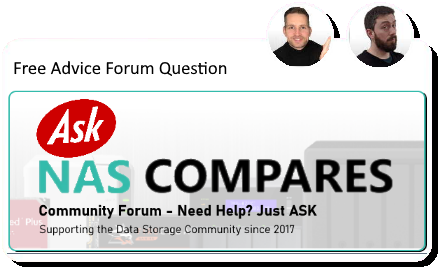01-30-2025, 03:35 PM
Hello,
First, thank you for all the very useful information.
I describe my situation. I work with photo's. (photo libraries, editing, ...). These are large files.
I have two work stations. My home, where there is ethernet connection (and a wifi 300mbs, 150mbs up) And an external, remote work place where there is only a wifi signal (limited to 100mbs down, 50mbs up).
I want the file acces and transfer as fast as possible. I have understand from your info that a synology with nvme for caching will speed up things. Also the use of sata ssd's in the bays. (Or an Nvme as set storage disk).
I will be limited by the up and download speed on the remote location. Will it then still make a difference to add a 10gbe port? As I still have to acces my home network, it is probably a little gain?
At home my router has a 10gbe port also my macs have 10gbe ports.
Besides the fast project disk and will use the nas as cold storage and back up with some HD in the other bays.
Thank you very much!
First, thank you for all the very useful information.
I describe my situation. I work with photo's. (photo libraries, editing, ...). These are large files.
I have two work stations. My home, where there is ethernet connection (and a wifi 300mbs, 150mbs up) And an external, remote work place where there is only a wifi signal (limited to 100mbs down, 50mbs up).
I want the file acces and transfer as fast as possible. I have understand from your info that a synology with nvme for caching will speed up things. Also the use of sata ssd's in the bays. (Or an Nvme as set storage disk).
I will be limited by the up and download speed on the remote location. Will it then still make a difference to add a 10gbe port? As I still have to acces my home network, it is probably a little gain?
At home my router has a 10gbe port also my macs have 10gbe ports.
Besides the fast project disk and will use the nas as cold storage and back up with some HD in the other bays.
Thank you very much!





